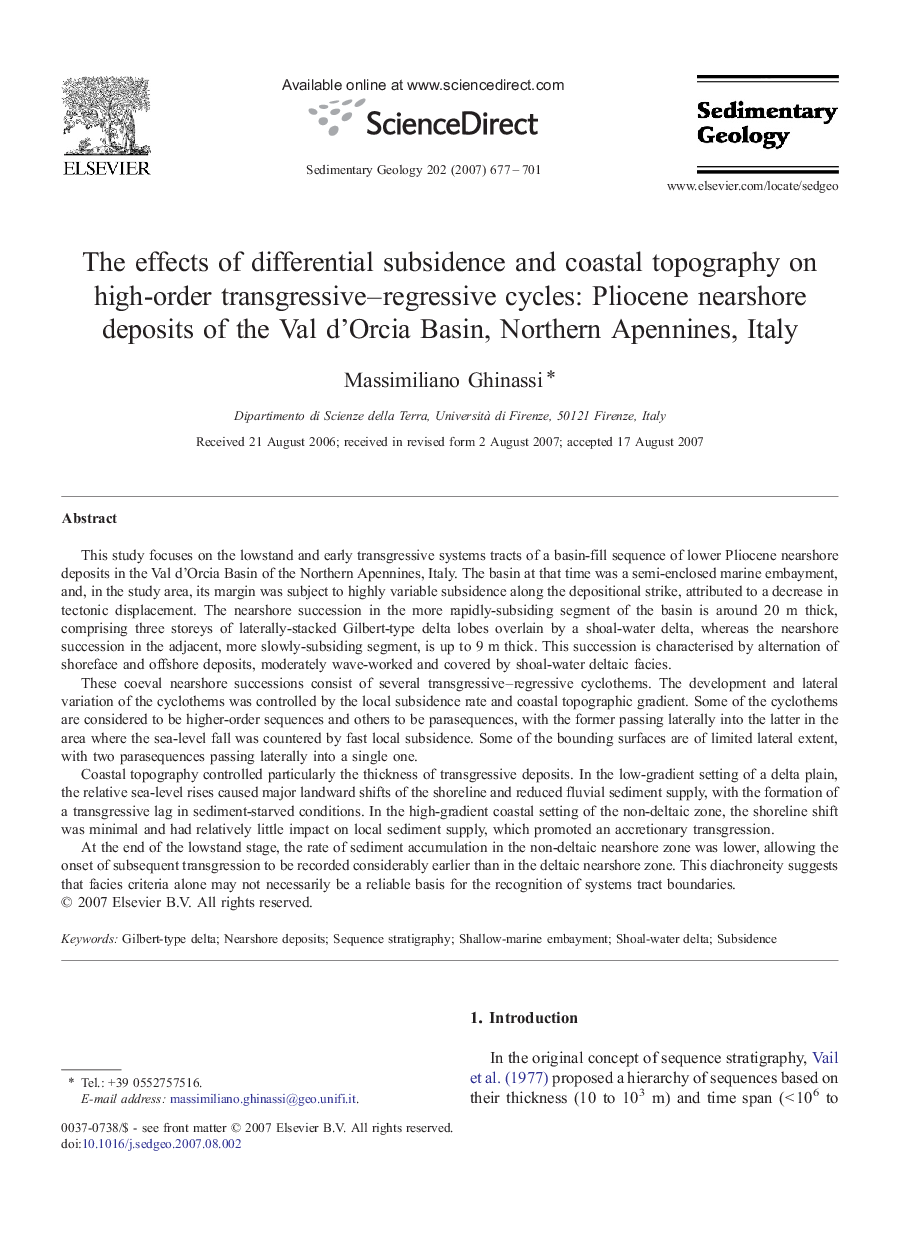| کد مقاله | کد نشریه | سال انتشار | مقاله انگلیسی | نسخه تمام متن |
|---|---|---|---|---|
| 4690699 | 1350137 | 2007 | 25 صفحه PDF | دانلود رایگان |

This study focuses on the lowstand and early transgressive systems tracts of a basin-fill sequence of lower Pliocene nearshore deposits in the Val d'Orcia Basin of the Northern Apennines, Italy. The basin at that time was a semi-enclosed marine embayment, and, in the study area, its margin was subject to highly variable subsidence along the depositional strike, attributed to a decrease in tectonic displacement. The nearshore succession in the more rapidly-subsiding segment of the basin is around 20 m thick, comprising three storeys of laterally-stacked Gilbert-type delta lobes overlain by a shoal-water delta, whereas the nearshore succession in the adjacent, more slowly-subsiding segment, is up to 9 m thick. This succession is characterised by alternation of shoreface and offshore deposits, moderately wave-worked and covered by shoal-water deltaic facies.These coeval nearshore successions consist of several transgressive–regressive cyclothems. The development and lateral variation of the cyclothems was controlled by the local subsidence rate and coastal topographic gradient. Some of the cyclothems are considered to be higher-order sequences and others to be parasequences, with the former passing laterally into the latter in the area where the sea-level fall was countered by fast local subsidence. Some of the bounding surfaces are of limited lateral extent, with two parasequences passing laterally into a single one.Coastal topography controlled particularly the thickness of transgressive deposits. In the low-gradient setting of a delta plain, the relative sea-level rises caused major landward shifts of the shoreline and reduced fluvial sediment supply, with the formation of a transgressive lag in sediment-starved conditions. In the high-gradient coastal setting of the non-deltaic zone, the shoreline shift was minimal and had relatively little impact on local sediment supply, which promoted an accretionary transgression.At the end of the lowstand stage, the rate of sediment accumulation in the non-deltaic nearshore zone was lower, allowing the onset of subsequent transgression to be recorded considerably earlier than in the deltaic nearshore zone. This diachroneity suggests that facies criteria alone may not necessarily be a reliable basis for the recognition of systems tract boundaries.
Journal: Sedimentary Geology - Volume 202, Issue 4, 15 December 2007, Pages 677–701